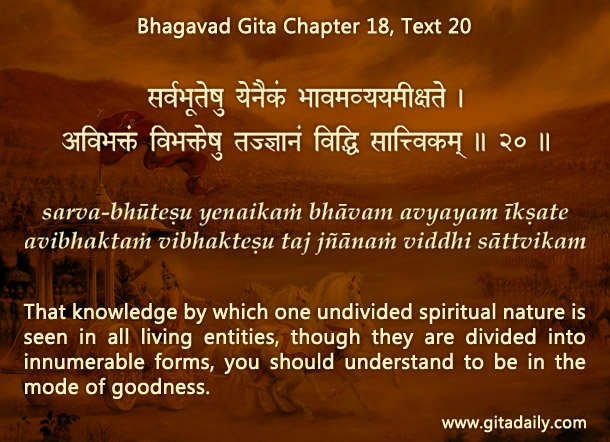Some people argue that animals don’t have souls; only humans have, because humans alone have the capacity for spiritual enquiry.
This argument conflates the existence of the soul with the existence of the capacity for spiritual enquiry. That capacity requires a developed consciousness, whereas the soul’s defining characteristic is consciousness, be it developed or under-developed. After all, the opposite of spirit, matter has nothing in its atomic or subatomic constituents that even remotely resembles consciousness.
And consciousness is manifest even in animals. What differentiates humans from animals is the potential for the development of consciousness. Animals have under-developed consciousness that is locked in fulfilling the bodily drives for eating, sleeping, mating and defending. Our consciousness too is directed towards those bodily drives, but it doesn’t have to be restricted there. We can enquire about the purpose of existence – what we are meant to achieve ultimately by eating, sleeping, mating and defending. We can discern that we have a core which transcends our body. And we can realize and relish that spiritual core: our soul.
The Bhagavad-gita (18.20) urges us to see that the same imperishable spiritual essence animates all living beings. To claim that animals don’t have souls is to strip their existence of any ultimate purpose: they live, they struggle, they suffer, they die, and are consigned to an eternity of nonexistence. Why should their existence be so utterly pointless?
Gita wisdom explains that nature doesn’t play favorites like this, imbuing meaning to the existence of some living beings, while condemning the remaining living beings, who comprise the majority of life, to meaningless existence.
Thus, the Gita offers an integrated vision of all life, wherein we appreciate that all life has a transcendental purpose, and that we humans are nearest to fulfilling that transcendental purpose.
To know more about this verse, please click on the image
Explanation of article:
Podcast:
Download by “right-click and save”


Leave A Comment